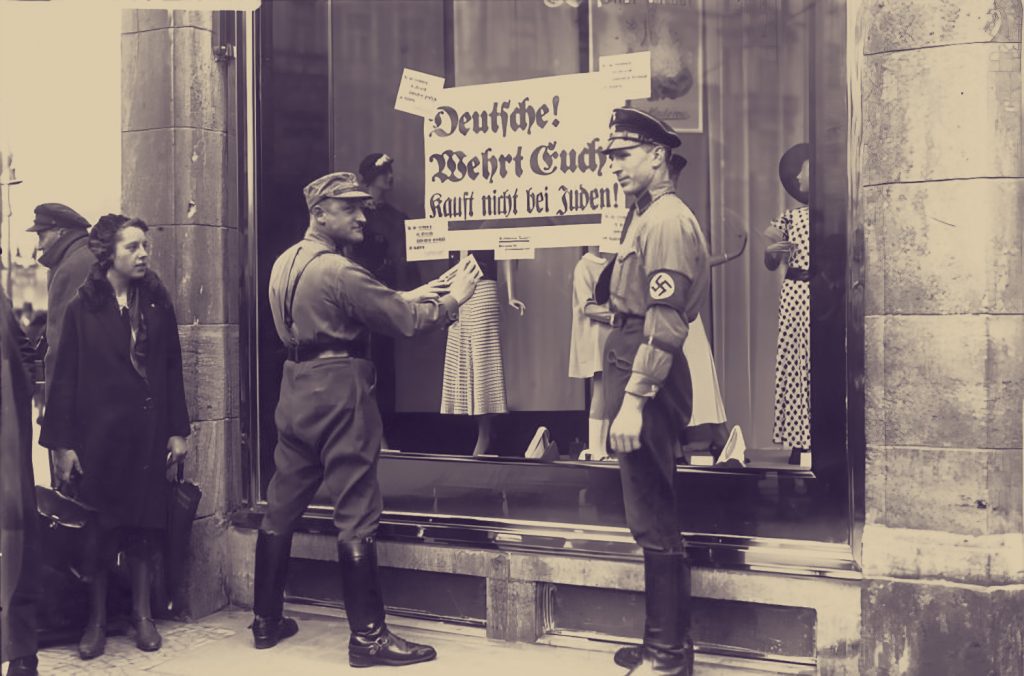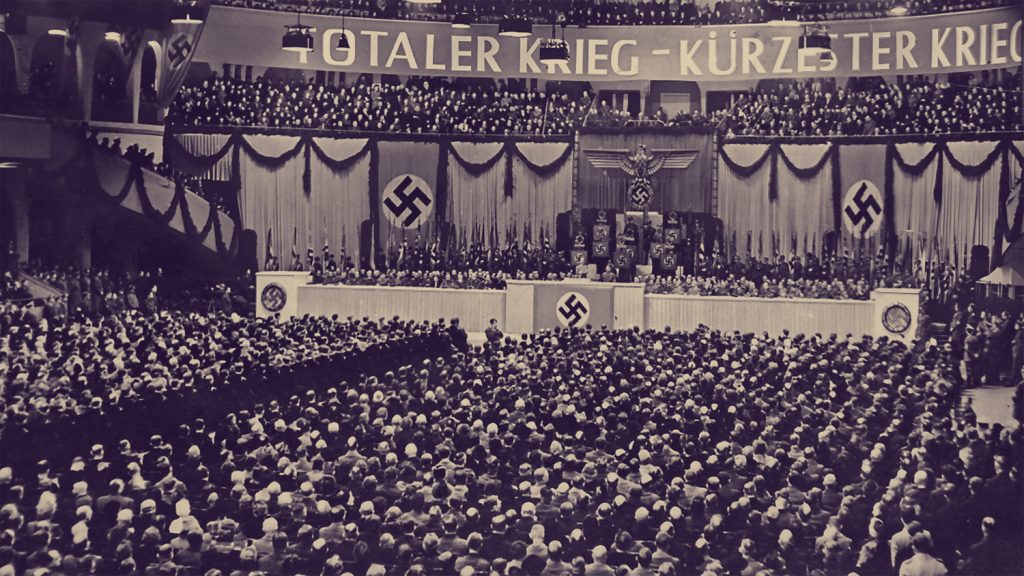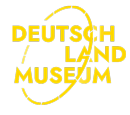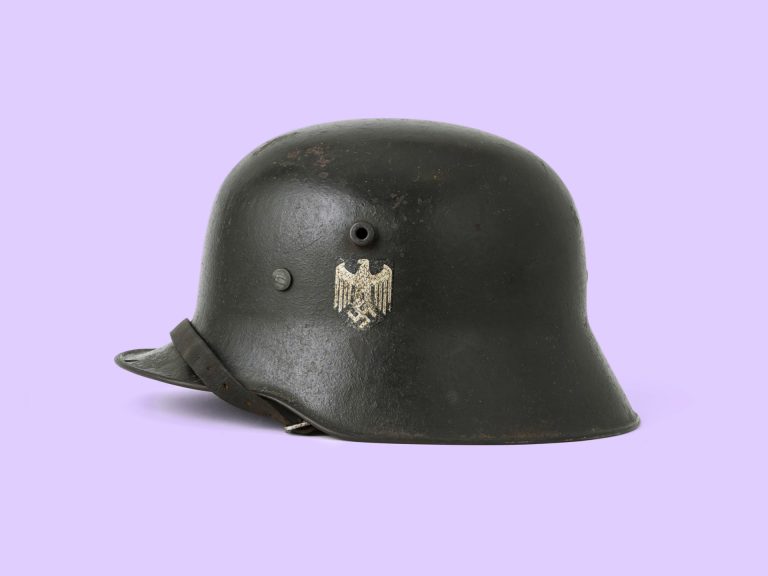
The Third Reich
1933
The Third Reich
Terror and war crimes
There is no doubt that the Third Reich was the darkest chapter in German history. The racist dictatorship established in 1933 under the leadership of Adolf Hitler unleashed the Second World War and committed multiple acts of genocide. What resulted was the moral and physical collapse of the German state.
The development of the Third Reich 1933 - 1938
Exploiting the social misery resulting from economic downturn after 1930, the National Socialist German Workers’ Party (NSDAP) achieved steadily increasing electoral success and held just under a third of all parliamentary seats by 1932. The pressure which this situation exerted eventually resulted in the appointment of its leader, Adolf Hitler, as Reich Chancellor on 30 January 1933.
Deploying propaganda and violence, the new government succeeded in transforming Weimar democracy into a dictatorship. Opponents of the regime were systematically persecuted and imprisoned, and any form of resistance was ruthlessly suppressed. The Nuremberg Race Laws passed in 1935 stripped Jews of their civil rights and furthered discrimination against them.
The new government also sought to restore Germany’s position as a great power through a massive programme of rearmament. The annexation of Austria in 1938 was the first step towards expanding the size and resources of Germany; this was intended as a precursor to the establishment of a wider German empire in Central and Eastern Europe

The systematic oppression of Jews began shortly after Hitler came to power: a Nazi stormtrooper plasters a boycott poster on a Jewish shop window in April 1933 Photograph by Georg Pahl, 1933 (source: Federal Archives, picture 102-14468 via Wikimedia Commons, CC-BY-SA 3.0)
The Second World War: a total war
The Second World War began with the German invasion of Poland in 1939. Having rapidly conquered large areas of northern and western Europe, the Third Reich turned its attention eastwards and invaded the Soviet Union in 1941. The invading armies committed numerous war crimes against the civilian population of the occupied countries, especially in Eastern Europe. At the Wannsee Conference in 1942, the decision was taken to systematically exterminate European Jews. The Third Reich then began the killing of between six and nine million Jews in industrial death camps.

Do you want total war? Propaganda Minister Joseph Goebbels gives a speech in the Berlin Sports Palace in 1943 announcing the move to total war Photograph, Fot. Schwahn, 1943 (source: Federal Archives, picture 183-J05235 via Wikimedia Commons, CC-BY-SA 3.0)
The defeat of the Wehrmacht at Stalingrad in 1943 was a decisive turning point in the Second World War. Even the advent of „total war” proclaimed by Propaganda Minister Joseph Goebbels and involving the complete mobilization of national resources could not prevent the Allies from gaining the upper hand. The US-British invasion of France on „D-Day” – 6 June 1944 – signalled the beginning of the end for the Third Reich. With Soviet troops in Berlin, Adolf Hitler committed suicide in 1945 and German resistance collapsed.
Share article
1933
Adolf Hitler was appointed Reich Chancellor on 30 January 1933. The transition from democracy to dictatorship took only a short time to complete.
Epochen im Museum

About the Deutschlandmuseum
An immersive and innovative experience museum about 2000 years of German history
The forest of the Varus Battle
Knowledge is just one click away
Embark on a journey through 2,000 years of German history. One country, 12 epochs. You’re invited to experience the Epoch Weeks at the Deutschlandmuseum. Every week we showcase an epoch that is also on display in the Deutschlandmuseum.
FAQ
The Third Reich is the term generally used to refer to period of National Socialist rule in Germany. Beginning with the appointment of Adolf Hitler as Chancellor in 1933, it ended with the dissolution of the NSDAP after the end of the Second World War in 1945.
Founded in 1920, the National Socialist German Workers’ Party (NSDAP) was an extreme right-wing political party led by Adolf Hitler. Following success in the federal parliamentary elections of 1932, Adolf Hitler was appointed Reich Chancellor in 1933. Soon after, all other parties were banned and the NSDAP ruled in a one-party dictatorship.
The term was used in National Socialist propaganda as a way to depict National Socialist rule as the legitimate successor to the traditions of German history. The Holy Roman Empire of the German Nation (962 – 1806) was seen as the first empire and Imperial Germany (1871 – 1918) as the second.
The Third Reich was characterized by the one-party dictatorship of the NSDAP which sought to realize its extreme right-wing and racist ideology. Propaganda and violence were used to bring the German population into line and persecute minorities, especially the Jews. An aggressive foreign policy resulted in the outbreak of the Second World War, in which German soldiers committed numerous atrocities and the state applied industrial methods to organize the mass murder of minorities.


